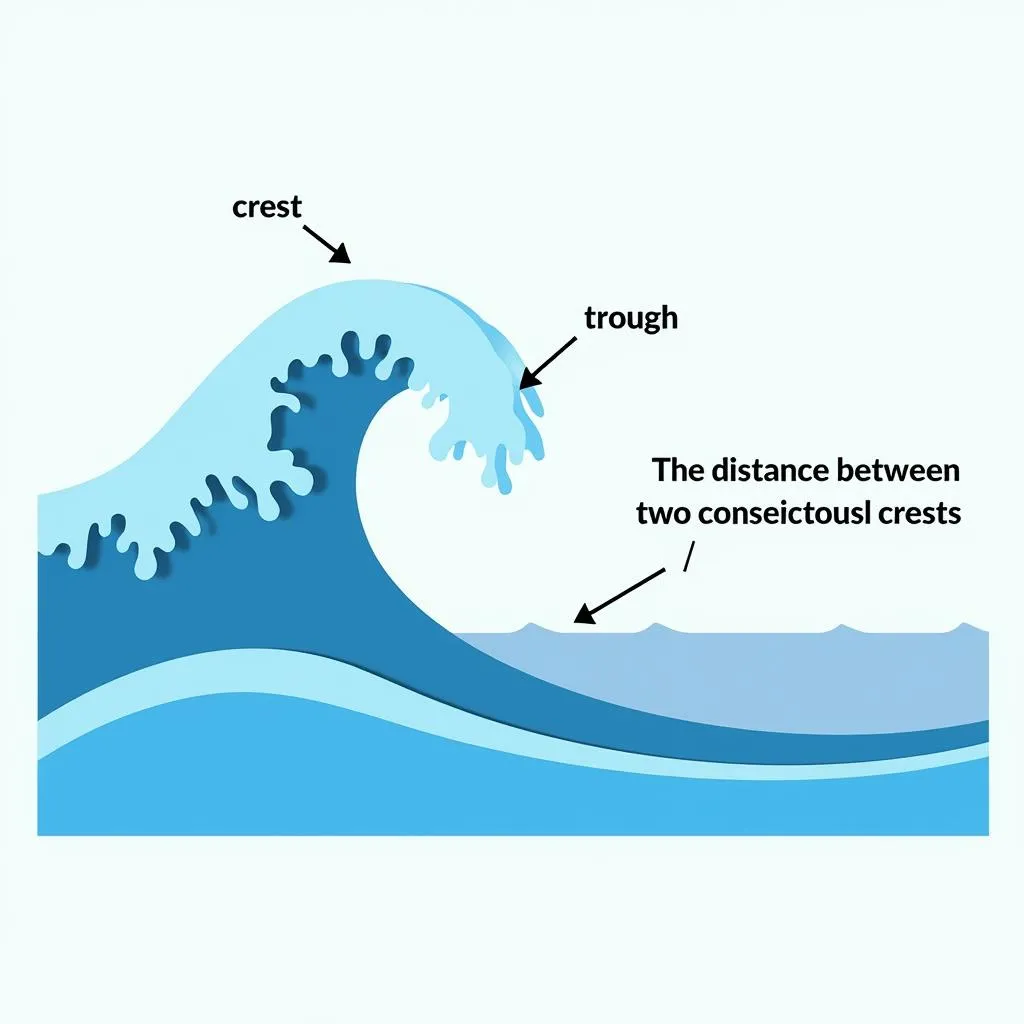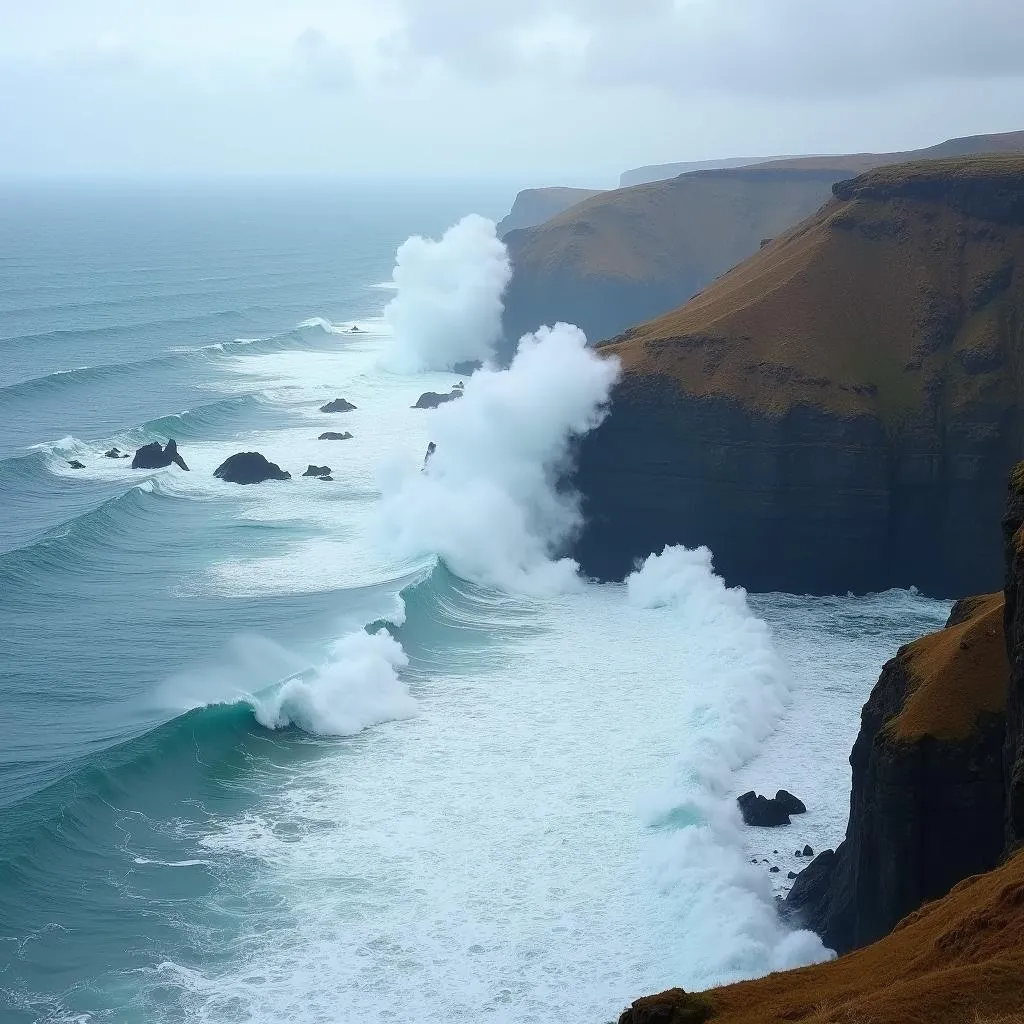Have you ever stood on the shore, watching the waves crash and wondered, “How fast are these watery giants actually moving?” It’s a question that has probably crossed the minds of many beachgoers, from the sunny shores of Miami Beach to the rugged coastlines of Big Sur.
The speed of an ocean wave is a fascinating subject, influenced by a number of factors, and it’s not as simple as a single number. Let’s dive deeper (pun intended!) into the world of wave dynamics and uncover the secrets behind their speed.
Unraveling the Physics of Wave Speed
Contrary to what some might think, the water in a wave isn’t actually traveling across the ocean. It’s the energy within the wave that’s moving. Imagine a line of people doing “the wave” in a stadium – the people themselves aren’t moving horizontally, but the wave energy is.
So, how fast does this energy travel? Well, that depends on a few key factors:
1. Wavelength: The Key to Speed
The most important factor influencing wave speed is its wavelength – the distance between two consecutive wave crests. Longer wavelengths mean faster waves. Think about it like this: a longer wave has more energy to propel it forward, like a powerful swimmer taking long, strong strokes.
2. Water Depth: Shallow vs. Deep Waters
Water depth also plays a significant role. In deep water, where the ocean floor doesn’t interfere, wave speed is primarily determined by wavelength. But as waves approach shallower waters, like those near the coast, friction with the ocean floor slows them down. This is why you often see waves bunching up and increasing in height as they near the shoreline.
 Ocean wave wavelength
Ocean wave wavelength
3. Wind: The Driving Force
Wind is the primary energy source for most ocean waves. Stronger winds whipping over a longer distance (known as fetch) create larger, faster waves. Think about the massive waves surfers crave – they’re often the result of powerful storms far out at sea.
Calculating Wave Speed: A Little Bit of Math
While the actual calculations can get quite complex, there’s a simplified formula that gives a good estimate of wave speed in deep water:
Speed (meters/second) = 1.25 x √Wavelength (meters)
For example, a wave with a wavelength of 10 meters would travel at roughly 3.95 meters per second.
The Power of Waves: A Travel Story
I once had the opportunity to visit Nazaré, Portugal, a place famous for its monstrous waves. Standing on the cliffs, watching these towering walls of water come crashing down, was an awe-inspiring experience. These giants, generated by powerful storms in the North Atlantic, can reach heights of over 100 feet! The sheer power and speed of these waves were a humbling reminder of the immense forces at play in our oceans.
 Giant waves crashing in Nazaré, Portugal
Giant waves crashing in Nazaré, Portugal
FAQs: Your Wave-Related Queries Answered
Q: Can ocean waves travel faster than a boat?
A: Absolutely! Large ships typically travel at speeds up to 20-25 knots (about 23-29 mph), while a powerful storm surge can easily create waves that travel much faster.
Q: What’s the fastest an ocean wave can travel?
A: While most ocean waves travel at speeds of a few to tens of miles per hour, tsunamis, generated by earthquakes or underwater volcanic eruptions, can travel at speeds of over 500 mph – as fast as a jet plane!
Q: Do waves always break when they reach the shore?
A: Not necessarily. The way a wave breaks depends on the shape of the ocean floor. On gently sloping beaches, you’ll see the classic crashing waves. But on steeper coastlines, waves might simply surge up and down.
Riding the Waves of Knowledge
Understanding the speed of ocean waves is not just about satisfying curiosity; it’s crucial for a variety of fields, from maritime navigation and coastal engineering to understanding the impacts of climate change on our oceans.
If you’re planning a trip to the coast, remember to treat the ocean with respect. Those waves you see crashing on the shore carry immense energy, shaped by wind and water over vast distances.